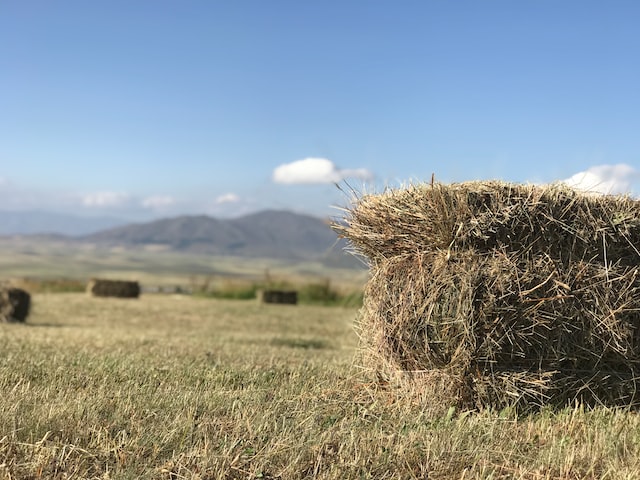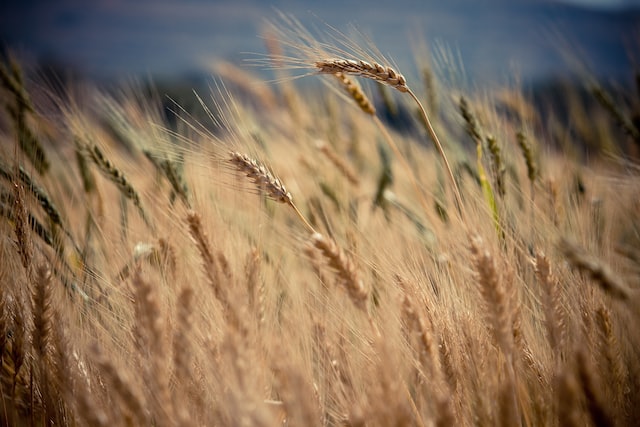Crafting Aromatic Perfumes with Hay Notes
Hay: The Earthy Aroma and Versatility - From Perfumes to Fun Crazy Facts
Hay, a humble and rustic agricultural product, holds a surprising range of applications, including perfumes, fragrance, therapeutic oils, food, medicinal systems, history, and even fun crazy facts. Its earthy aroma and versatility make it an intriguing element in various domains. In this article, we embark on a journey to explore the captivating allure of hay, uncovering its diverse uses and intriguing characteristics that have fascinated people for generations.
1. Hay in Perfumes and Fragrance
The distinct and earthy aroma of hay has inspired perfumers to incorporate its essence into fragrances. While hay extract itself is not commonly used in perfumery, certain fragrances aim to capture the essence of fresh-cut hay, evoking a sense of nostalgia and natural simplicity.
2. Hay in Therapeutic Oils
Hay is not commonly used as a primary source of therapeutic oils in aromatherapy. However, certain plants, like chamomile or lavender, that grow in hay fields may have their essential oils extracted and used for therapeutic purposes.
3. Hay in Culinary Delights
Hay is not typically consumed as a primary ingredient in culinary creations. However, in certain culinary traditions, hay has been used in unique cooking methods such as hay-smoking meats or fish to impart a subtle smoky flavor.
4. Hay in Medicinal Systems
In traditional medicine, hay has not been extensively used for its medicinal properties. However, certain herbal remedies may incorporate plants that grow in hay fields for their potential health benefits.
5. Historical Significance of Hay
Hay has a long history of use in agriculture and livestock farming. Its importance lies in providing fodder for animals during the winter months when fresh grass is scarce. The process of haymaking, known as "making hay while the sun shines," was vital for preserving animal feed.
6. Fun and Crazy Facts about Hay
a. In Folklore and Traditions: In some cultures, hay is associated with superstitions or traditions. For example, making a hay doll is a rural tradition in some parts of Europe.
b. Hay in Art and Literature: Hayfields and bales of hay have been depicted in various artworks and featured in literature, representing rustic landscapes and rural life.
c. Hay Maze Festivals: In certain countries, hay mazes are constructed as part of seasonal festivals or celebrations.
d. Hay and Horse Racing: Hay is an essential part of equestrian sports, as it provides a significant portion of the diet for horses.
e. Hay and Bedding: In some parts of the world, hay has been used as bedding for animals or as an insulation material in traditional housing.
Hay, with its earthy aroma and agricultural significance, stands as a versatile element that has intrigued and contributed to various aspects of human life. From fragrances that evoke nostalgia for rustic fields to intriguing fun facts, hay continues to captivate and inspire. Whether valued for its role in agriculture or appreciated for its rustic charm, hay represents the simple yet profound wonders of nature. As we celebrate hay's contributions to various domains, it stands as a testament to the enduring appeal of agricultural treasures and their integral role in shaping human history and cultural practices.
Hay, a humble and rustic agricultural product, holds a surprising range of applications, including perfumes, fragrance, therapeutic oils, food, medicinal systems, history, and even fun crazy facts. Its earthy aroma and versatility make it an intriguing element in various domains. In this article, we embark on a journey to explore the captivating allure of hay, uncovering its diverse uses and intriguing characteristics that have fascinated people for generations.
1. Hay in Perfumes and Fragrance
The distinct and earthy aroma of hay has inspired perfumers to incorporate its essence into fragrances. While hay extract itself is not commonly used in perfumery, certain fragrances aim to capture the essence of fresh-cut hay, evoking a sense of nostalgia and natural simplicity.
2. Hay in Therapeutic Oils
Hay is not commonly used as a primary source of therapeutic oils in aromatherapy. However, certain plants, like chamomile or lavender, that grow in hay fields may have their essential oils extracted and used for therapeutic purposes.
3. Hay in Culinary Delights
Hay is not typically consumed as a primary ingredient in culinary creations. However, in certain culinary traditions, hay has been used in unique cooking methods such as hay-smoking meats or fish to impart a subtle smoky flavor.
4. Hay in Medicinal Systems
In traditional medicine, hay has not been extensively used for its medicinal properties. However, certain herbal remedies may incorporate plants that grow in hay fields for their potential health benefits.
5. Historical Significance of Hay
Hay has a long history of use in agriculture and livestock farming. Its importance lies in providing fodder for animals during the winter months when fresh grass is scarce. The process of haymaking, known as "making hay while the sun shines," was vital for preserving animal feed.
6. Fun and Crazy Facts about Hay
a. In Folklore and Traditions: In some cultures, hay is associated with superstitions or traditions. For example, making a hay doll is a rural tradition in some parts of Europe.
b. Hay in Art and Literature: Hayfields and bales of hay have been depicted in various artworks and featured in literature, representing rustic landscapes and rural life.
c. Hay Maze Festivals: In certain countries, hay mazes are constructed as part of seasonal festivals or celebrations.
d. Hay and Horse Racing: Hay is an essential part of equestrian sports, as it provides a significant portion of the diet for horses.
e. Hay and Bedding: In some parts of the world, hay has been used as bedding for animals or as an insulation material in traditional housing.
Hay, with its earthy aroma and agricultural significance, stands as a versatile element that has intrigued and contributed to various aspects of human life. From fragrances that evoke nostalgia for rustic fields to intriguing fun facts, hay continues to captivate and inspire. Whether valued for its role in agriculture or appreciated for its rustic charm, hay represents the simple yet profound wonders of nature. As we celebrate hay's contributions to various domains, it stands as a testament to the enduring appeal of agricultural treasures and their integral role in shaping human history and cultural practices.
To experience augmented reality, please open the Facebook-app using QR code and point to the image below
Unveiling the Hay Scent Palette
Hay refers to grass that has been cut and dried for use as animal feed, bedding, or fuel. It is a common food source for animals such as horses, cows, and sheep, as well as for small pets like rabbits and guinea pigs. Hay is typically harvested from fields of grasses such as timothy, brome, orchardgrass, and alfalfa. The process of making hay involves cutting the grass, allowing it to dry in the sun, and then baling it for storage and transportation.
There are different types of hay based on the grass species and the stage of growth when it was harvested. For example, alfalfa hay is high in protein and is often fed to dairy cows and other animals that need a high-protein diet. Timothy hay is lower in protein and higher in fiber, making it a good option for animals that need to maintain a healthy digestive system.
Hay can also be used as a source of bedding for animals, as it is soft and absorbent, which makes it an ideal material for animals to lay on.
It's important to note that hay can be dusty and moldy if not stored properly, which can cause respiratory problems for animals, so it's important to store hay in a dry place and to choose hay that is not moldy or dusty.
There are different types of hay based on the grass species and the stage of growth when it was harvested. For example, alfalfa hay is high in protein and is often fed to dairy cows and other animals that need a high-protein diet. Timothy hay is lower in protein and higher in fiber, making it a good option for animals that need to maintain a healthy digestive system.
Hay can also be used as a source of bedding for animals, as it is soft and absorbent, which makes it an ideal material for animals to lay on.
It's important to note that hay can be dusty and moldy if not stored properly, which can cause respiratory problems for animals, so it's important to store hay in a dry place and to choose hay that is not moldy or dusty.
Scentopia Singapore: Where Fragrance Meets Nature
Hay fun facts:
- The world's largest hay bale weighed over 10,000 pounds and was created in Nebraska, USA in 2011.
- Hay is typically made from grasses such as alfalfa, clover, and timothy, but can also be made from other plants such as brome and fescue.
- Hay is a staple food for many types of livestock, including horses, cows, goats, and sheep.
- The process of making hay involves cutting the grass, allowing it to dry in the sun, and then baling it for storage and transport.
- The word "hay" comes from the Old English word "hæg", which means "enclosure" or "fence."
Exploring the Distinctive Aroma of Hay in Perfumes
Hay has been used in therapeutic settings for a variety of purposes. Some of the benefits include:
- Inhalation therapy: Hay is often used to help people with respiratory conditions such as asthma and allergies. The dried grass can be used to make a compress, which is applied to the chest or back, or it can be placed in a pillow or inhaler for people to breathe in.
- Stress relief: Hay can be used to create a calming and peaceful environment. The natural scent and rustling sound of hay can help to soothe and relax people.
- Sensory stimulation: For people with sensory processing disorders, hay can provide a range of textures and scents that can help to stimulate the senses and improve overall well-being.
- Aromatherapy: Hay has a natural, warm and comforting smell that can be beneficial for many people, it is often used in aromatherapy to help people relax, de-stress and improve their mood.
- Decorations: Hay is often used in decorations for festivals and events, as it adds a rustic and natural feel to the setting.
Hay-Inspired Fragrances: A Blend of Rustic and Modern
The scent of hay is often described as warm, natural, and comforting. The smell is a combination of the grasses and plants that make up the hay, as well as the drying and curing process it goes through. The scent can vary depending on the type of grass or plant used to make the hay. For example, alfalfa hay has a sweet, fresh scent while timothy hay has a more earthy, hay-like scent.
The scent of hay is also affected by the drying process. Freshly cut hay has a green, grassy smell, while hay that has been dried and cured in the sun for a longer period of time has a more intense, sweeter scent.
The scent of hay is also used in aromatherapy. The warm and comforting smell is said to help people relax, de-stress and improve their mood. Inhalation therapy can be done using dried hay, or by adding essential oils to hay in order to get the desired scent.
Overall, the scent of hay is considered to be a natural, calming, and soothing fragrance that can be used to enhance the atmosphere and improve overall well-being.
The scent of hay is also affected by the drying process. Freshly cut hay has a green, grassy smell, while hay that has been dried and cured in the sun for a longer period of time has a more intense, sweeter scent.
The scent of hay is also used in aromatherapy. The warm and comforting smell is said to help people relax, de-stress and improve their mood. Inhalation therapy can be done using dried hay, or by adding essential oils to hay in order to get the desired scent.
Overall, the scent of hay is considered to be a natural, calming, and soothing fragrance that can be used to enhance the atmosphere and improve overall well-being.
Creating Lasting Impressions with Scented Hay Accords
The scent of hay can be incorporated into perfumes as a note. Hay is often used in perfumes that have an outdoorsy or rustic theme, and it can add a natural, warm, and comforting note to the fragrance.
Some examples of perfumes that feature hay as a note include:
Some examples of perfumes that feature hay as a note include:
- L'Artisan Parfumeur's "Jatamansi" is an earthy and warm fragrance that features hay and other natural elements such as patchouli and moss.
- Jo Malone's "Wild Bluebell" is a floral and fresh fragrance that features hay as a background note, adding a natural and rustic feel to the scent.
- The perfumer, Christopher Brosius, created a perfume named "Hay" it is a warm, earthy, and natural scent, it was made using the essence of freshly cut hay.
- "Sauvage" by Dior is a scent that has a note of hay, which gives it a woody and wild feel.
- "A Walk in the Irish Rain" by Inis is a unisex scent that captures the scent of an Irish countryside, it has a note of hay, which gives it a natural and earthy feel.
Join Scentopia, Sentosa's latest tourist attraction wonderful orchid scent crafting, fragrance tour, bridal shower or corporate team building which includes perfume making onsite and offsite, beach activities and more. We also serve primary school learning journey, secondary students and pupil on industrial excursions. Know more about our orchids perfume bar or therapeutic orchid scents and other wellness aromas. Conatct Perfume workshop or book a scent crafting session here.






